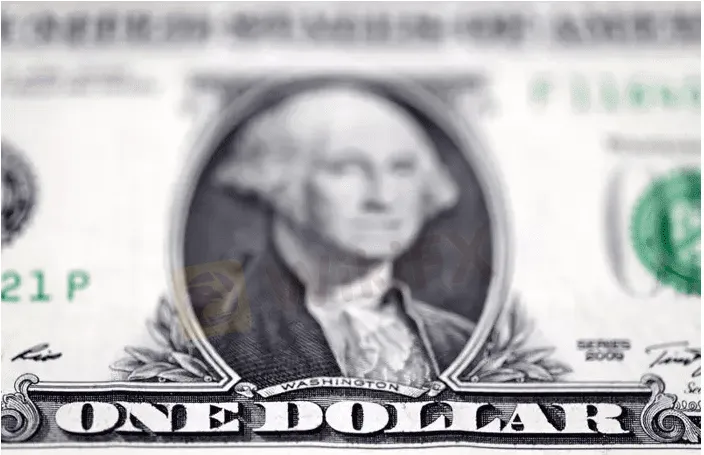简体中文
繁體中文
English
Pусский
日本語
ภาษาไทย
Tiếng Việt
Bahasa Indonesia
Español
हिन्दी
Filippiiniläinen
Français
Deutsch
Português
Türkçe
한국어
العربية
Dollar steadies as investors heed hawkish reminder from New Zealand
Abstract:The dollar nursed its biggest losses for years on Wednesday, after a dovish central bank surprise in Australia had investors wondering whether a peak is in sight for global interest rates.

The dollar steadied on Wednesday after a sharp rate rise in New Zealand poured cold water over hopes for a pause or slowdown in the U.S. Federal Reserves intentions for aggressive hikes.
The dollar had suffered its heaviest setback in more than two years on Tuesday but was back on the front foot after the Reserve Bank of New Zealand (RBNZ) delivered a fifth consecutive 50 basis point (bp) hike.
Even the New Zealand dollar was only boosted briefly. The kiwi leapt as much as 1.3% before falling back to barely above flat at $0.5741. The euro fell 0.2% to $0.9970. Sterlings rally paused as it fell 0.3% to $1.1449.
The RBNZ move and tone contrasted with the Reserve Bank of Australias surprisingly small 25 bp hike a day earlier, which had seemingly stoked hopes that the U.S. Federal Reserve may also slow hikes and fuelled dollar selling.
“Just as RBA‘s smaller-than-expected hike yesterday added to trimming of hawkish Fed bets, RBNZ’s hawkish signalling could remind markets that fighting inflation is still priority for many central banks,” said Maybank analyst Saktiandi Supaat.
“A more synchronous dovish tilt among major central banks on growth fears might be premature.”
The dollar index, down about 4% since hitting a record high of 114.78 last week, steadied at 110.30. The yen held at 144.06 per dollar and the Australian dollar fell 0.2% to $0.6488.
Demand for the safe haven dollar had fallen in recent days as the mood in global markets improved on speculation Britains new finance minister Kwasi Kwarteng, having rowed back on a proposed tax break for high earners, could make further adjustments to a mini-budget that had sent bond and currency markets into a tailspin last week.
Having recovered nearly 11% from week-ago record lows, sterlings rally seems to be running out of steam, dealers said.
Analysts have been cautious about how much has really changed about Britain‘s fiscal outlook and how broad Australia’s rates signal really was, leaving the dollars dip open to reversal.
U.S. Federal Reserve Governor Philip Jefferson reiterated overnight that inflation was policymakers top target and that growth would suffer in efforts to bring it down.
U.S. labour data due on Friday will be the next major indicator of the likely trajectory of U.S. rates.

Disclaimer:
The views in this article only represent the author's personal views, and do not constitute investment advice on this platform. This platform does not guarantee the accuracy, completeness and timeliness of the information in the article, and will not be liable for any loss caused by the use of or reliance on the information in the article.
Read more

Top 10 Trading Indicators Every Forex Trader Should Know
Master the top 10 Forex trading indicators to analyze real-time Forex quotes, trends, and market signals. Learn strategies to boost accuracy and avoid mistakes.

Geopolitical Events: What They Are & Their Impact?
You've heard many times that geopolitical events have a significant impact on the Forex market. But do you know what geopolitical events are and how they affect the FX market? Let us learn about it today.

Why Do You Feel Scared During Trade Execution?
Trade execution is a pivotal moment for traders. It is when analysis turns into action, and potential profits or losses become reality. However, for many traders, this moment is accompanied by fear. Why does this happen, and how can you address it?

WikiEXPO Global Expert Interview: Simone Martin—— Exploring Financial Regulation Change
In the midst of financial innovation and regulation, WikiGlobal, the organizer of WikiEXPO, stays abreast of industry trends and conducts a series of insightful and distinctive interviews on pivotal topics. We are delighted to have the privilege of inviting Simone Martin for an in-depth conversation this time.
WikiFX Broker
Latest News
Geopolitical Events: What They Are & Their Impact?
Volkswagen agrees deal to avoid Germany plant closures
Top 10 Trading Indicators Every Forex Trader Should Know
TradingView Launches Liquidity Analysis Tool DEX Screener
MultiBank Group Wins Big at Traders Fair Hong Kong 2024
WikiEXPO Global Expert Interview: Simone Martin—— Exploring Financial Regulation Change
'Young investors make investment decisions impulsively to keep up with current trends' FCA Reveals
Why Do You Feel Scared During Trade Execution?
CySEC Settles Compliance Case with Fxview Operator Charlgate Ltd
Malaysian Influencer Detained in Taiwan Over Alleged Role in Fraud Scheme
Currency Calculator


